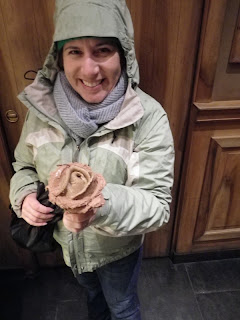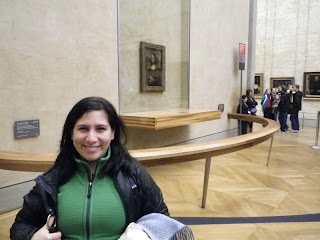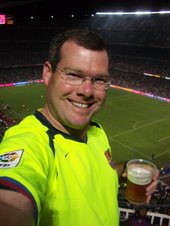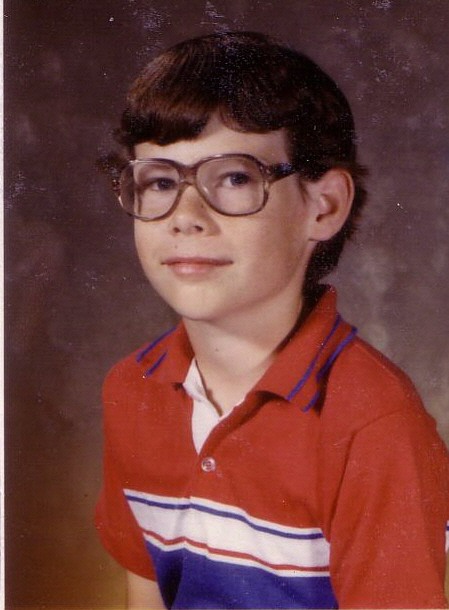 |
| Paris in Winter. |
Paris in December.
Paty had almost three weeks of vacation in the use it or lose it before Janruary 1, so were looking for somewhere to go. The options were plentiful, but we were limited by where could we get with 180K Alaska Airlines miles. It turns out we could get almost anywhere we wanted. But we could not get home. There were hidden (and sometimes over) blackout dates for much of the world. Ideally we wanted to go to New Zealand as our first choice. I actually found a flight from Dec 1 - Dec 8. But with traveling that would have been 6 nights in country and about 48 hours total in flight. Not worth it. Then my focus turned to Peru. I have had Machu Picchu on my bucket list for a long time and in an amazing coincidence we have a friend living in Cusco, Peru. But Paty did not want to go somewhere 'normal', she wanted to speak another language. Since she speaks Spanish everyday at work, this convoluted logic makes a bit of sense.
Then after about two weeks of searching, a Paris flight opened up. 40K miles each (almost too cheap) and we were off. Seattle > Chicago > Paris. The good news is we still have 100K miles banked and with US Soccer World Cup Qualifiers in Costa Rica and Panama in the fall...
Since Paty was in Brazil, it was up to me to make arrangements. And the first thing I learned is that Paris is expensive. I already knew that, but add in the relative strength of the dollar compared to the Euro (the Exchange on this trip was 1 Euro = $1.33 or thereabouts) made it worse. Our plan was for one week in Paris and one week in the French countryside...somewhere. I found a service that rents apartments in Paris for people like us. I had one place in the Latin Quarter all booked, but at the last second it was not available. Being Three days before we left, I had to make a split decision and I ended up picking out option #2 which was a small apartment in Ile St Louis. The apartment could be graded on three criteria in order of important to us: Location, Cleanliness and Size. Well our aprartment got a 10, 9 and 1 respectively. Ile St Louis is an island right in the middle of Paris. It is the island right behind where the Notre Dame Cathedral is. From our apartment to the front of Notre Dame was 600 meters or about a 4 minute walk. The location and the island were perfect, the apartment was super clean. It was also SUPER small, capital letters intended. Conflicting reports out of the Mr and Mrs Tobin camp have claimed that someone was so mad when he or she saw the apartment that him or her cried and insisted on moving.
But we got used to it and made the best of it as every morning the bakery, cheese shop and butcher was literally next door to our place. And with the exception of one night, it was very quiet.
Here is a pic of our little island:
 |
| Christmas lights throughout the island. |
And here is what we ate almost every day at some point:
 |
| With egg: Croque Monsieur, W/O egg: Croque Madam |
Here is the photo of our island from one of the many bridges that connect us to the rest of Paris:
 |
| Add captionNotre Dame in the background, the Eiffel Tower 5 degrees to the left off picture. |
Hey look, gelato shaped as a flower:
 |
| Yes, it was cold in Paris. |
Now that we have gotten accustomed to the mini Paris apartment and had some time to rest and relax, it's time to go exploring. We are not ones for checking off a list in a tour book. Basically we just left the apartment on foot everyday with a vague plan on somethings we wanted to see. We arrived on a Tuesday and had the apartment until the following Tuesday, but as we paid for the week we had the option of leaving early so our intention was to head somewhere else on Monday. Thus, six nights in Paris. One of the beauties of Paris is there are amazing sites everywhere. We all know about the Eiffel Tower and the Louvre, but pretty much everywhere you turn there is some amazing beautiful and most likely old building. Here is the door to some random church we happened to walk by:

This is pretty much the site I saw the entire trip, Paty crossing the street by herself. Because like a true Parisian if there are no cars coming, I go. But Paty has this ingrained rule abiding streak that makes her either wait for the walk sign or hesitate so much about crossing on the red no crossing sign that she ends up 10 seconds behind:
Obligatory Eiffel Tower Pictures:
Later in the week we went up to one of our favorite place, Montmarte. It is in the the 18th arrondissement of Paris. An arrondissement is basically a district. They are basically the way you tell someone where you are in Paris. "Today we hung out with the hipster's in the 18th" would be a quote I could have used.
File this under note to self: Next time in Paris, just stay in the 18th. It's a great place, very cool and trendy restaurants and all the good new bakeries are up there that have won 5 of the last 6 years the contest to make the state baguette. Paris is so big, you almost have to take the Metro wherever you go anyway, might as well just stay in the 18th and take the metro to the center when needed.
 |
| Touristy Center of top of Montmarte hill. Where the artists sell their wares. |
The photo above is where we bought a two paintings last time we were in
Paris. We did not buy anything this time. But it is a great place to
hang out in a nice day. Today it was cold but sunny, so we hunkered
down in an outside cafe and had some lunch and I read my book while Paty
did Paty things. I'm almost always happy to get the house wine by the
pitchet or demi-pitchet (basically a pitcher of whatever they have as
house wine) and again this did not disappoint. We spent most of the day
wandering around Montmarte, which also include Paty's favorite church
Sacré-Cœur Basilica
or the Basilica of Sacre-Cour.
 |
| Yes, that is the Vin Chaud or Gluwein or Hot Wine commonly sold at Christmas markets. |
Another day, more walking. We walked around Paris A LOT. But that's really all I wanted to do outisde of one planned outing, so I was good.
 |
| River Seine from one of the Ile St Louis bridges. |
 |
| Random Photo that I thought turned out well. |
Hey, look at that, there's the Louvre. It's like famous and stuff. We should go there.
 |
| That's a really nice scarf you have there Paty. |
 |
| That's the scarf you bough in the Aran Islands six years ago. Oh and there's the Mona Lisa. |
Someone complained that we did not have many photos together, Voila:
 |
| Still got the scarf. |
It turns out that the Louvre is open until 9:30 on Friday's. So even with a procrastination schedule (read, Paty really wanted to sleep in on our tiny little sofa bed and I got up to surf the net, write some soccer blurbs and make coffee) we had plenty of time. Being as it was around 6 PM on a Friday night I thought we would have a "Night at the Museum" experience and the Louvre would be relatively empty. This was not so, it was packed. It's hard to explain just how big the actual museum is. It's enormous and very easy to get lost. And no matter where you go, there are people everywhere. Except for a few choice exhibits like the Mona Lisa or Venus de Milo nothing is crowded though. It's just a really really really large space. Here's a photo trying to show one of many grand halls, I was trying to get the scope of the place but failed:
 |
| The Louvre is really large, and still got the scarf. |
Paty with Venus de Milo, not the best picture. I really need a new camera as I was borrowing Reid's all weather point and shoot for the majority of these photos. The rest were taken via iPhone and not the new iPhone, either my ancient 3GS or Paty's 4G.
 |
| The last shot photo ever with the scarf. |
Paty wanted this photo for the background. This is the Greek statue section, where I am taking the photo the Venus de Milo is only about 30 feet behind me. We took a long time to get this photo right as there was a certain angle Paty wanted in order to get "The Best Parts" of the statue you see.
 |
| Paty with her Greek 'Friends'. |
Notice the lack of scarf.
It was never to be seen again. We realized it at the end of our exploration of the Louvre. This was maybe 40% into our exploration and after we realized we lost the scarf, we backtracked a LONG ways. But we did not make it this far. What is ironic (or not) is earlier in the visit I noticed and even commented to Paty that there was a ton of clothes (hats, gloves, other scarves, kids stuff) dropped all over the museum.
All in all the Louvre was a memorable experience, lost scarf and incomprehensible conversation with the lost and found lady notwithstanding.
Saturday brought the only event that I had on the official "We Must Do This" agenda:
 |
| Parc de Princes Stadium. We were early. |
Footy! Paris Saint-Germain or PSG was hosting Evian (like the water) in a French Ligue 1 match. We got to the stadium early as we still had to sort out how to pick up our tickets bought on-line. And also procure a couple of scarves (pictured).
PSG won 4-0 in what turned out to be a very COLD viewing experience. The stadium is interesting. They have two tiers holding approximately 48k fans that are covered with the concrete roof. Reported attendance was 39,500 for the game we attended, it seems to be slightly less than that but not empty by any means. And the 35k or so fans created quite a bit of noise. PSG has made it to the knockout rounds of this years Champions League. With the way the stadium is set up and how it funnels noise towards the pitch, that is going to be an intimidating atmosphere.
 |
| Good view of the stadium and how it's setup to keep sound in. |
As for the game itself, it was cool to be able to say we saw Zlatan Imbrahimovich in person. The Swedish striker is one of the handful of best players in this generation, not on par with Messi or Ronaldo but at the top of the tier right below those all timers.
Unfortunately the French league is not exactly challenging. Zlatan had a goal and an assist in a 2 minute flurry of activity and then proceeded to seem thoroughly disinterested the remainder of the match. As someone who knows abit about the inner workings of The Zlatan, it was fascinating to watch.
We were able to pre-game with the PSG fans. We found a bar right outside the stadium that a lot of the supporters frequented. That bar was also the site of our biggest photographical failing of the entire Paris trip is not the entire year. About 10 mins after we entered the bar, it was starting to fill up and Paty was finally starting to warm up (it was REALLY cold that night, like 30 degrees) a person came into the pub wearing a vintage Seattle Super Sonics starter jacket. The classic logo and everything. Of course I had my Sounder jacket on and wanted a photo. But before long we lost him in the crowd and when we went to look for this mysterious Sonic fan and/or hipster anti-Stern protestor, he was gone. A missed photo op for sure.
That will be all for this epicly long Paris post. We are off to Reims, the home of Champagne, for a schedule three nights on Monday.
Chris's Note: This is a work in progress. Currently we are in Strasbourg and I'm writing this in fits and starts as I wait for Paty to get ready. Now it's mostly done unless I decide to add a bit about Notre Dame Cathedral. Oh and proofread as I haven't done that yet and now Paty seems to be ready again.


